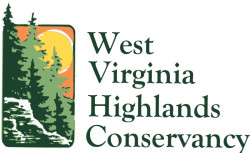The Land and Water Conservation Fund is scheduled to expire on September 30, 2018. There are efforts afoot to keep that from happening and to keep it authorized permanently.
The Land and Water Conservation Fund (LWCF) was created by Congress in 1965. It represented a bipartisan commitment to safeguard natural areas, water resources and our cultural heritage, and to provide recreation opportunities to all Americans. National parks like Rocky Mountain, the Grand Canyon, and the Great Smoky Mountains, as well as national wildlife refuges, national forests, rivers and lakes, community parks, trails, and ball fields in every one of our 50 states were set aside for Americans to enjoy thanks to federal funds from the Land and Water Conservation Fund (LWCF).
The Land and Water Conservation Fund uses revenue from one of our natural resources: offshore oil and gas. Every year, $900 million in royalties paid by energy companies drilling for oil and gas on the Outer Continental Shelf (OCS) is available to be put into this fund. The money is intended to create and protect national parks, areas around rivers and lakes, national forests, and national wildlife refuges from development, and to provide matching grants for state and local parks and recreation projects.
The LWCF state assistance program provides matching grants to help states and local communities protect parks and recreation resources. Running the gamut from wilderness to trails and neighborhood playgrounds, LWCF funding has benefited every county in America, supporting over 41,000 projects. This 50:50 matching program is the primary federal investment tool to ensure that families have easy access to parks and open space, hiking and riding trails, and neighborhood recreation facilities.
Over the life of the program, more than $3 billion in LWCF grants to states has leveraged more than $7 billion in nonfederal matching funds. But funding levels have been unpredictable; not all the money that is available to the Fund is appropriated to it each year.
Around the country, the LWCF program has permanently protected nearly five million acres of public lands including some of America’s most treasured assets such as Grand Canyon National Park, the Appalachian National Scenic Trail, the White Mountain National Forest, and Pelican Island National Wildlife Refuge, the nation’s first federal refuge. According to the United States Department of the Interior website, every county in the United States has had some project that was funded in whole or in part by the Land and Water Conservation Fund.
In West Virginia, the Land and Water Conservation Fund (LWCF) has provided funding to help protect West Virginia’s most special places and ensure recreational access for hunting, fishing and other outdoor activities. Public lands such as the Canaan Valley National Wildlife Refuge, Harpers Ferry National Historic Park, Monongahela National Forest, Chief Logan State Park, and New River Gorge National River have all benefited. Forest Legacy Program grants, funded under LWCF, help protect working forestlands while enhancing wildlife habitat, water quality and recreation at places such as the Potomac River Hills in Morgan County. LWCF state assistance grants have supported hundreds of projects across West Virginia’s state and local parks.
All public access points along West Virginia’s Lower and Middle Gauley River, which is used by over 50,000 people annually, were made possible by LWCF funding. LWCF has also protected 57,000 acres in the Gauley River and New River Gorge Recreation Area that includes not just river access but over 2,000 named rock climbing routes. LWCF has also funded protection of the remnants of 19thand 20thcentury mining towns in the New River Gorge. These historic sites protect unique West Virginia heritage and diversify the base of visitors to the area. Roughly1.2 million visitors enjoy these two parks annually.
Now the continuation of the Land and Water Conservation Fund is threatened. It began in 1965 and was authorized for twenty five years. It was reauthorized in 1990 for another twenty five years. In 2015 it was reauthorized for only three years so it will expire on September 30, 2018.
In considering the extension of the Fund, there are two questions to be addressed. The first is the extension itself. The option favored by the West Virginia Highlands Conservancy, as well as other conservation groups, is to make it permanent so that it never expires. Congress could, of course, always repeal the act that authorizes the Fund but, barring affirmative action by Congress, the Fund would continue permanently.
The second question to be addressed is how much of the royalties from oil and gas drilling must be spent by the Land and Water Conservation Fund. The royalties from offshore drilling provide the money for the Fund. Congress must still, however, decide to appropriate that money to the Fund. Historically, Congress has rarely appropriated the entire amount that is available from the royalties to the Land and Water Conservation Fund. Many years only a small fraction of the money that would be available to the Fund actually goes to the Fund.
Now Congress musts decide on the future of the Fund. Senator Shelly Moore Capito has co-sponsored a bill that would permanently reauthorize the Land and Water Conservation Fund. Senator Joe Manchin has supported a similar bill that would accomplish the same result. This would correct the problem of the Fund periodically expiring and having to be renewed.
Senator Manchin has gone a step farther and supported legislation that would help ensure that the Fund is fully funded each year.
